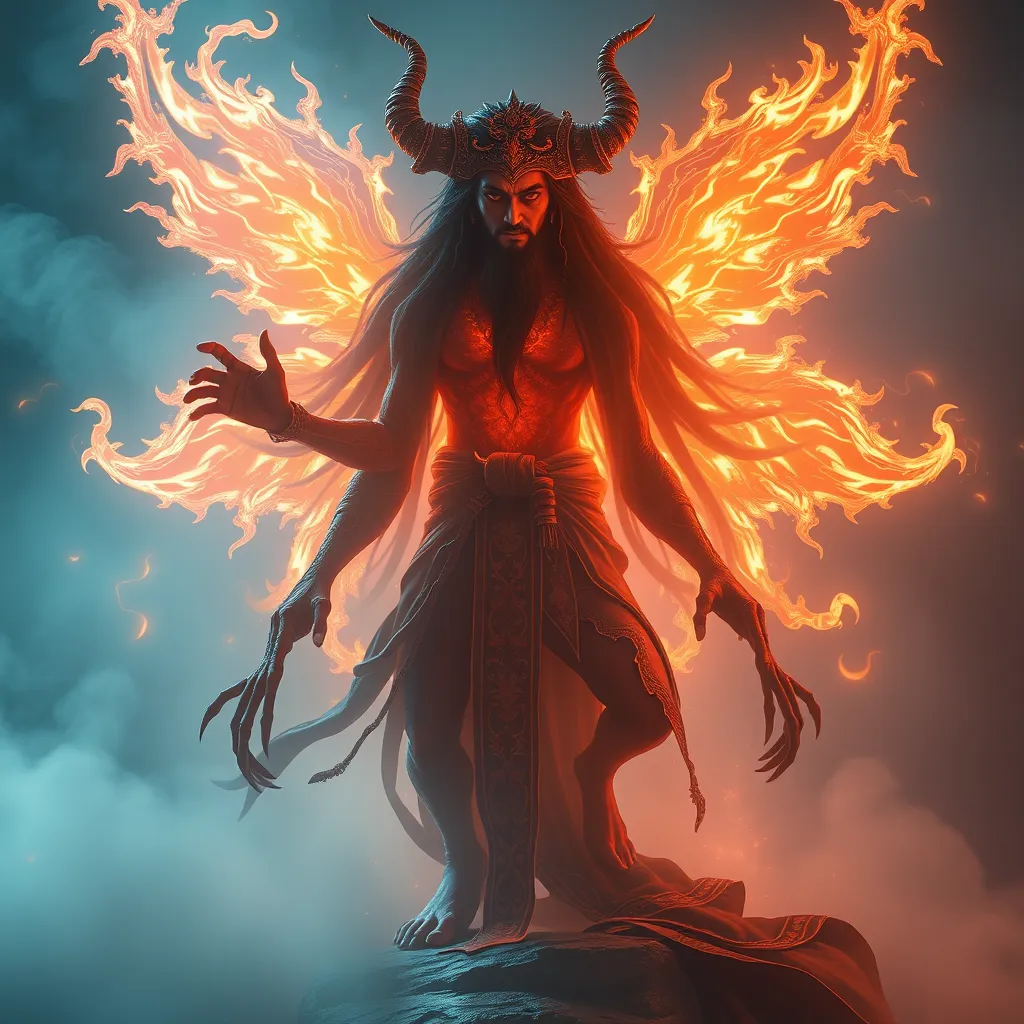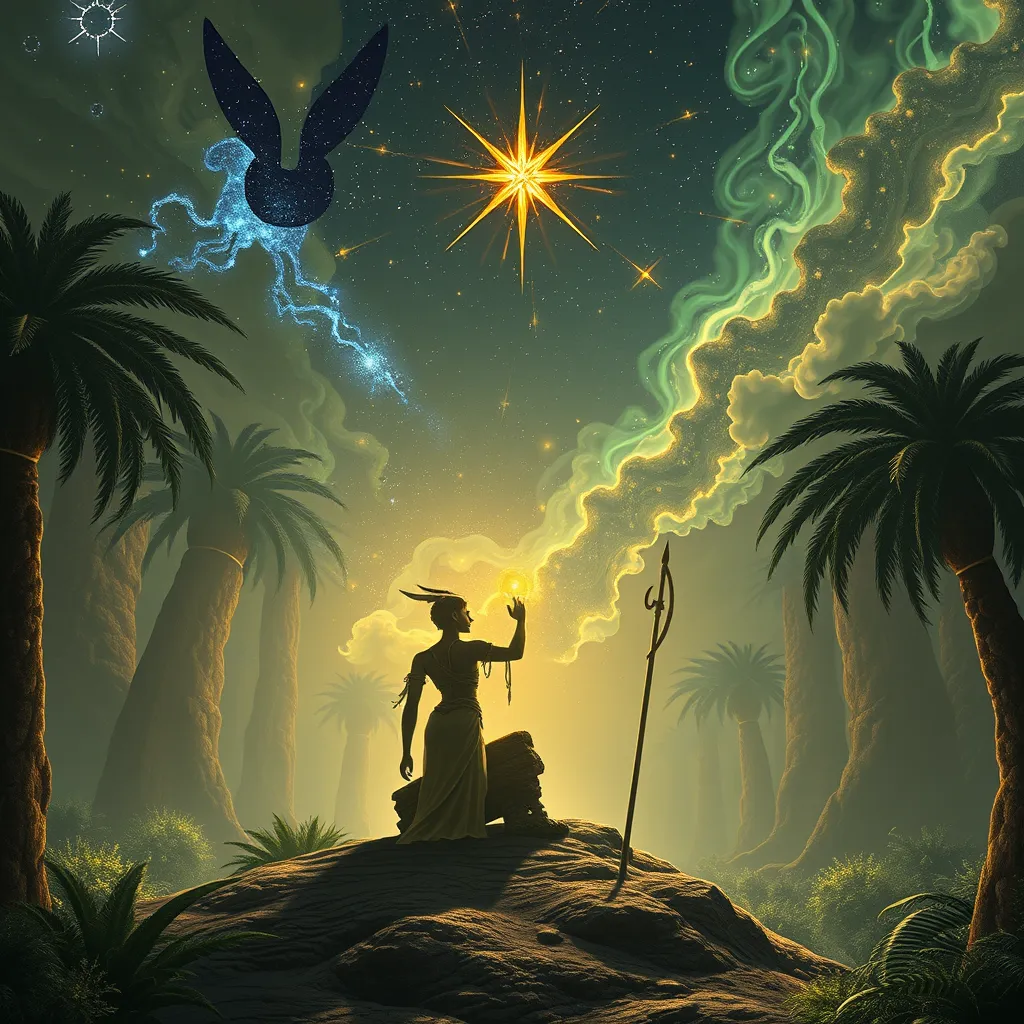The Jinn as Shapeshifters: Exploring the Transformation of Form
I. Introduction to Jinn and Their Cultural Significance
The concept of Jinn, often translated as “genies” in popular culture, has its roots deep in Arabian mythology. These supernatural beings are believed to be created from smokeless fire, as stated in Islamic texts, and occupy a unique position within the pantheon of spiritual entities.
In Islamic teachings, Jinn are considered sentient beings endowed with free will, much like humans. They can be good, evil, or neutral, and play significant roles in the spiritual narratives of the religion. Jinn are often associated with the unseen world, and their interactions with humans can evoke both fear and fascination.
One of the most intriguing aspects of Jinn lore is their ability to shapeshift. This transformative power not only highlights their mystical nature but also serves various cultural and narrative purposes. Shapeshifting allows them to navigate the human realm, embodying different forms that reflect their complex identities.
II. The Concept of Shapeshifting in Mythology
Shapeshifting is a common motif in mythologies around the world. From ancient Greek myths of gods transforming into animals to Native American legends of skinwalkers, the ability to change form speaks to humanity’s fascination with identity and transformation.
- A. Historical perspectives on shapeshifting across cultures: Different cultures have their own interpretations of shapeshifting, often linked to spiritual growth, punishment, or the blurring of boundaries between the human and the divine.
- B. The role of transformation in folklore and mythology: Transformation often serves as a narrative device to explore moral lessons, cultural values, or the nature of existence.
- C. Comparisons with other shapeshifting beings in various traditions: Many cultures feature shapeshifting beings, including werewolves, selkies, and trickster gods, each embodying unique cultural insights and fears.
III. Types of Shapeshifting Among Jinn
Jinn exhibit a variety of shapeshifting abilities, each with its own implications and meanings.
- A. Animal transformations and their symbolic meanings: Jinn may take the form of animals, such as snakes or wolves, often symbolizing danger or cunning. These transformations can serve as warnings or omens in folklore.
- B. Human forms and the implications of identity: When Jinn assume human shapes, they can explore themes of deception, identity, and the nature of humanity itself. This also raises questions about the authenticity of appearances.
- C. Elemental transformations: Fire, smoke, and other forms: Given their origin from fire, Jinn can manifest as smoke or flames, representing their ethereal nature and connection to the elemental world.
IV. Mechanisms Behind Jinn Shapeshifting
Understanding how Jinn shapeshift adds depth to their portrayal in folklore and mythology.
- A. Theories on how Jinn transform according to folklore: Many stories suggest that Jinn can transform through sheer willpower or magical means, highlighting their connection to the supernatural.
- B. The relationship between will, intention, and transformation: The ability to change form may be tied to a Jinn’s intentions, suggesting a deeper connection between thought and reality.
- C. Spiritual and mystical explanations: Some believe that shapeshifting is a manifestation of spiritual energy, where the Jinn’s essence can adapt to various realms and forms.
V. Cultural Interpretations of Jinn as Shapeshifters
The portrayal of Jinn as shapeshifters has permeated various cultural expressions, reflecting their multifaceted identities.
- A. Jinn in literature and storytelling: Notable examples: From the tales of “One Thousand and One Nights” to modern fantasy novels, Jinn have captivated audiences with their transformative abilities.
- B. Artistic representations of Jinn transformations: In visual arts, Jinn are often depicted in dynamic forms, emphasizing their fluidity and the beauty of their transformations.
- C. Modern adaptations in popular culture (films, games, etc.): Movies like “Aladdin” and video games featuring Jinn showcase their shapeshifting abilities, often blending traditional lore with contemporary storytelling.
VI. Psychological and Philosophical Implications
The concept of shapeshifting raises intriguing psychological and philosophical questions.
- A. Shapeshifting as a metaphor for identity and self-exploration: The ability to transform can symbolize the fluid nature of identity, allowing individuals to explore different facets of themselves.
- B. The psychological impact of encountering a shapeshifter: Encounters with shapeshifting beings can provoke fear, wonder, or introspection, challenging one’s understanding of reality.
- C. Philosophical questions raised by the concept of transformation: Shapeshifting prompts discussions about the essence of identity, the nature of existence, and the boundaries between different states of being.
VII. Jinn in Contemporary Contexts
In today’s society, the allure of Jinn and their shapeshifting abilities persists, adapting to modern beliefs and narratives.
- A. Modern beliefs and practices involving Jinn: Many cultures still engage with Jinn through rituals, seeking protection or guidance, reflecting a blend of ancient traditions and contemporary spirituality.
- B. Shapeshifting narratives in contemporary media and their relevance: Current films and literature continue to explore the theme of shapeshifting, resonating with audiences’ desire for connection to the mystical.
- C. The resurgence of interest in Jinn and folklore in a globalized world: The globalization of culture has sparked renewed interest in Jinn, leading to cross-cultural exchanges and reinterpretations of their stories.
VIII. Conclusion: The Enduring Legacy of Jinn and Their Transformative Powers
In summary, the Jinn as shapeshifters represent a rich tapestry of cultural significance, psychological depth, and spiritual inquiry. Their ability to transform serves not only as a narrative device but also as a profound metaphor for the complexities of identity and existence.
Understanding Jinn as shapeshifters invites us to reflect on our own identities and the fluid nature of self. As we navigate a world increasingly fascinated by the mystical and the unknown, the legacy of Jinn continues to resonate, reminding us of the transformative powers inherent in all beings.



